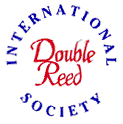
|
The Opus 56 Wind Quintets of Franz Danzi
|
Scores and Parts Created from the Early 19th-Century Sources
Charles-David Lehrer, General Editor
Franz Danzi: Quintet in F Major: Op. 56, No. 3
Flute, Oboe, Clarinet, Horn, and Bassoon
Franz Danzi (1763-1826) published this work, the third of his Trois Quintetti Op. 56, with the House of Maurice Schlesinger in 1821, the plate number being 3e.Qto. This series would be among the first works published by Schlesinger.
The instruments are given French names on the frontispiece: flûte, hautbois, clarinette, cor, and bassoon; but Italian pervades the actual parts insofar as tempo and dynamics are concerned. There is no score. Clarinet in Bb, and horn crooked in F are specified for this work; but throughout Danzi's nine quintets the clarinetist will need Bb and A clarinets, while the hand-horn player will use several crooks.
The Op. 56 Quintetti are set in the following keys:
No. 1: Si b majeur
No. 2: Sol mineur
No. 3: Fa majeur
These three works are dedicated to Antoine Reicha, who had composed 24 wind quintets during the years c.1810-1820. The publication of Reicha's quintets was still in process when Danzi brought out his first set, the Op. 56, in 1821. Each of Danzi's quintets follows the same four-movement scheme as Reicha's: sonata form, slow movement, scherzo, finale. It is significant that Danzi, who worked at the court of the Grand Duke of Baden in his magnificent Schloss in Karlsruhe at the time, chose the Parisian publisher Maurice Schlesinger to present his first three quintets, for it was in Paris that Reicha's superb quintet players were in residence at several of the most prominent theatres in town. Covering all bases, the same series was issued concurrently in Berlin, the capitol of Prussia, by the father of Maurice, Adolf Martin Schlesinger who was the founder of Chez Schlesinger. The latter house became ledgendary eight years later in 1829 for its publication of Johann Sebastian Bach's Matthew Passion , which followed quickly upon the first 19th-century performance of that great work by Felix Mendelssohn.
First Movement
Andante sostenuto: eighth note = 80
Allegro [alla breve]: half note = 84
A slow introduction leads to a modest and predictable sonata form. The initial theme is of the military variety, and its motivic material will be found to be an important ingredient throughout the movement. There follows a contrasting theme and several closing themes, the first containing pyrotechnics. The development section begins with a repetition of Theme 1 in the subdominant and later includes a revamping of the closing theme attached to Theme 1. In comparison to the masterful first movements in the Op. 88 and Op. 91 quintets of Reicha, which were already in circulation when Danzi's Op. 56 was published (1821), this movement is quite naïve, but it is pleasant to the ear. Danzi’s use of a mild chromaticism is noteworthy in this most-Classical movement.
A cadenza is certainly in order at the end of the introduction. Perhaps the flute might do the honors here.
Second Movement
Andante: quarter note = 60 [eighth note = 120]
Set in the subdominant, Bb Major, the slow movement is a compact ternary form containing a most wonderful use of chromaticism towards the end. One only wishes that this movement were longer. The disposition of its thematic material follows:
Theme 1: tonic
Transition
Theme 2: dominant
Theme 1: tonic
Closing Themes: tonic. The first of these themes is derived from the transition.
The horn part lacks the F Major key signature. This is old fashioned hand-horn practice, wherein the single flat is written in as needed, making the part appear to be in C major. This same procedure is also followed in the Trio of the Menuetto which follows.
Third Movement
Menuetto. Allegretto: dotted half note = 72
Set up in the expected structure with its Trio in the subdominant followed by a da capo, each of these sections of the Menuetto [actually a Ländler] is set in binary form. The change of texture in the Trio is largely determined by the Alberti bass movement of the clarinet, a most-stereotypical concept, and the octave presentation of the melody. The Menuetto proper is sprinkled with a most wonderful chromaticism and the Neapolitan relationship in its B section is outstanding.
It is in this Ländler movement that we realize that Danzi is truly a Romantic composer. In fact, this movement is almost a waltz, and one can easily be led to visualizing the swirling couples in action within the ballroom of the great Karlsruhe Schloss of the Grand Dukes of Baden.
Fourth Movement
Allegretto: quarter note = 126
A Polacca in rondeau-sonata form structure brings Danzi’s third quintet, and first opus in the wind quintet genre, to an exciting close. And how very French his music is, for the Polacca or Polonaise was a primary vehicle for virtuosic display in the French musical theatre during the early Romantic Era. Danzi would have been well aware of its climatic use, for he also mounted several operas at the Karlsruhe Schloss where the op. 56 quintets were composed. In this example there are three statements of the fascinating refrain which surround two couplets. There is no central developmental couplet, but the second couplet is a recapitulation of the first.
About This Site
Site Developed by Nancy Bonar Lehrer
© International Double Reed Society: Boulder, Colorado, USA - 2001
If you are having difficulties using this site, see About This Site .
Home

